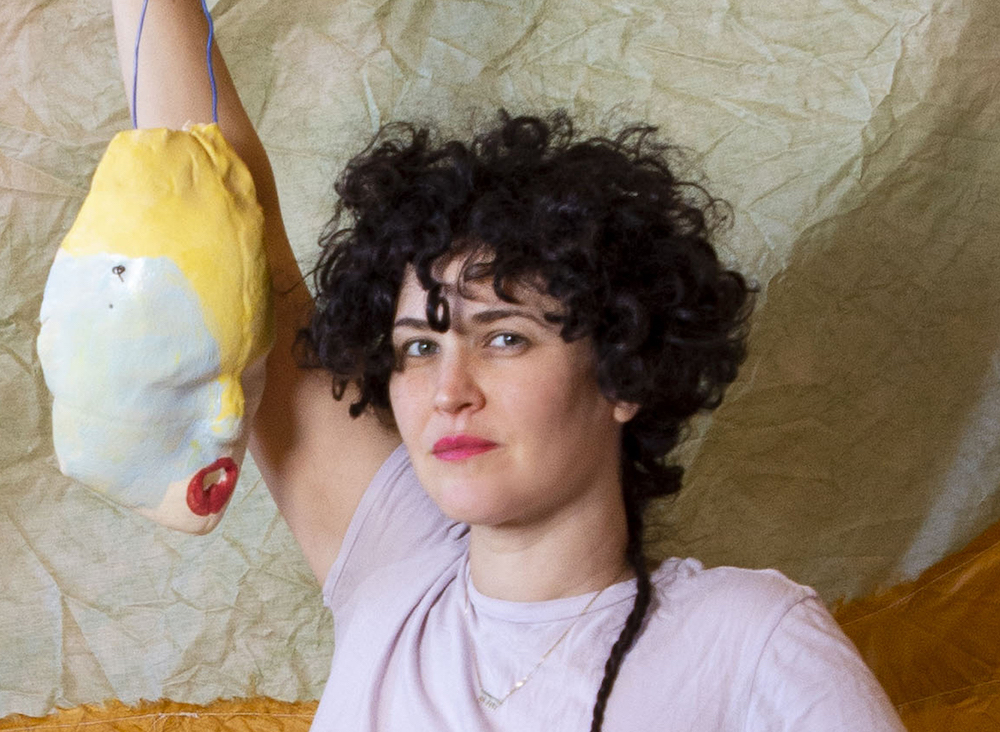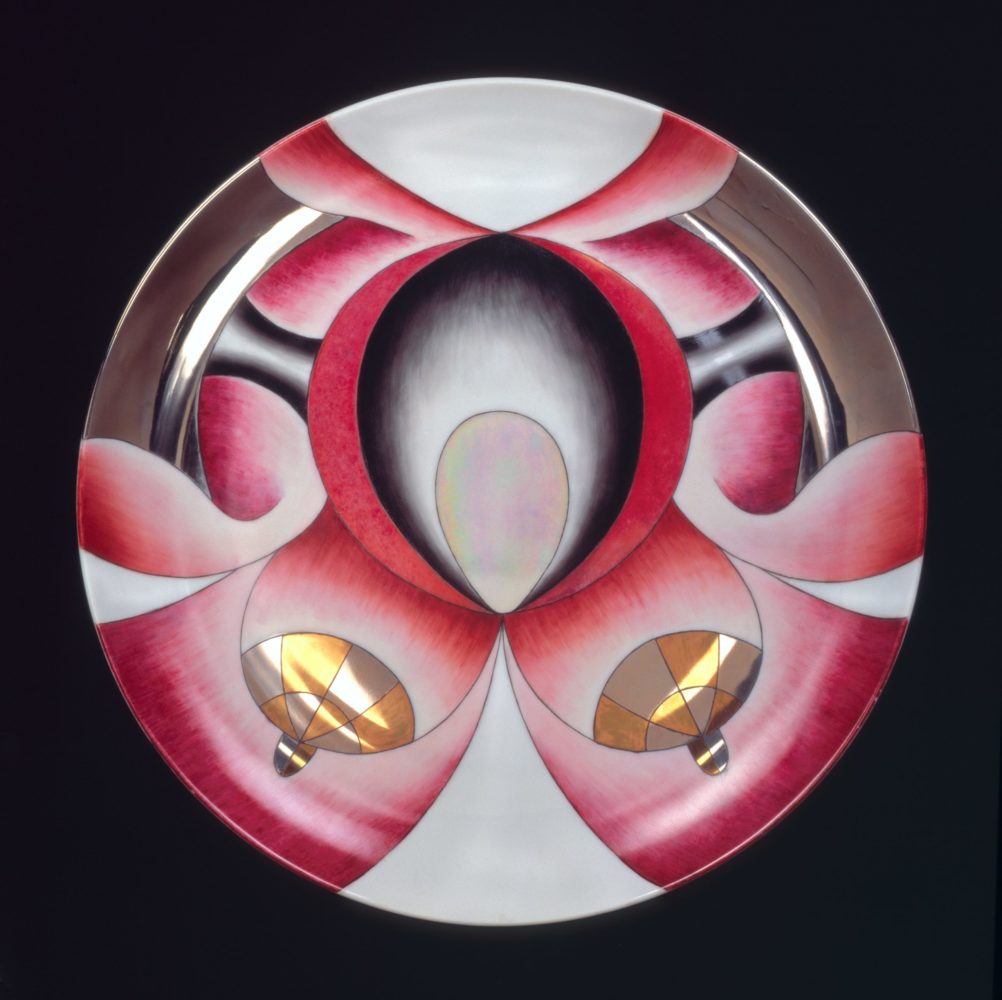This Thursday, artist Tamar Ettun is giving a virtual artist lecture with the Fosdick-Nelson Gallery at Alfred University. Her work is currently included in a group show at the gallery, “Speech Act,” curated by Gali Greenspan and on view through March 22.
Ettun is known for her sculpture, video, and performance work which explores cultural, social, and religious rituals. Her recent “Lilit” project engages with the Babylonian demon of the same name. In an essay previously published in Granta, the Jerusalem-born and Brooklyn-based artist shares the story of her own relationship with Lilit, who appeared throughout her childhood, and more recently after experiencing a miscarriage. The resulting multimedia series has grown during the COVID-19 pandemic—from a video shot at the Chinati Foundation in the summer of 2020 to an interactive texting exchange (which you can join by texting SUMMON to 8335751049).

Courtesy of Tamar Ettun.
The legend of Lilit dates back to the 2nd century, when Babylon’s Jewish community practiced a healing and acceptance ritual of trapping demons. Depicted in images on bowls, Lilit can be seen as mischievous and child-like, but also sometimes scary. “I thought this is a fabulous way to confront the deep parts of the internal shadow: making them accessible and playful,” Ettun said. “She is a complicated demon, historically misunderstood, that is now starting to get recognized as a feminist icon.” Confronting the female experience within a patriarchal society, Lilit is a symbol for generational healing, strength, and vulnerability.
Ettun’s “How to Trap a Demon” workshop takes place on May 1 at The Watermill Center, and the artist is part of the performance “The Moving Company and Friends” at Essex Flowers on March 21. Below, she shares her personal essay on Lilt.

Courtesy of Tamar Ettun.
I met Lilit when I was a child in Jerusalem. I am not sure where I first heard of the mythological Jewish demon, or why I befriended the dangerous demon of the night, it feels like she has always been there. I wrote her stories in very small books the size of a finger. I collected flowers and pieces of food and left it for her inside an old nebulizer mask, the stems sticking out the nostril holes. I called her late at night when I couldn’t sleep from the beeping sounds of the feeding machine, the monotone noise of the breathing machine, or my sister’s coughs. Some nights, Samael the Angel of Death would come over and Lilit would help with the negotiations over my sister’s life. Lilit knew Samael from way back, and she was the only adult that wasn’t intimidated by him. We would sit next to my sister’s bed, and I would make a list of promises for him to leave for good: Speaking fasts for days at a time, eating very very slowly, brushing my teeth for five minutes, not stepping on any ants, and chanting extra prayers.
My sister and I shared a room. There were seven of us, living in a three bedroom apartment my dad got from the Yeshiva for his studies. My parents were thirty years old, they had five children. We were the smallest family in the community. After two of my siblings were born with Cystic Fibrosis, the Rabbis gave my mom special permission to use birth control that isn’t otherwise allowed. My bed would fit underneath my sister’s bed. During the day I would push my bed under her so that we had room to play. The room was the exact size of both beds open, a desk, and a closet. My sister’s medical equipment took up a lot of space too.
Lilit and I needed privacy to play. I took a sheet and taped it around the desk. Under the desk I kept snacks, my collection of branches in interesting shapes, crayons, and blocks of EKG paper we got for free from the hospital to draw on. The paper had shaky lines printed on one side, but the other side was white and I would draw on it. The papers were all attached to one another, folded in a long scroll. Some days I would follow the hills and valleys of the line until it flattened. These days Lilit and I would have extra serious conversations with Samael about the future.

Courtesy of Tamar Ettun.
I haven’t seen Lilit for years. I moved to New York, and here there are Americans demons of a different kind. One night, after the COVID-19 pandemic started Lilit suddenly showed up. She came to my room with a full cast of Middle Eastern glamor, two small lions and two owls, as if she just stepped out of the Mesopotamian terra-cotta Burney Relief. The lions snuggled next to my bed, the owls were looking for something to snack on, and I gave them almonds.
One day before Lilit showed up I had a miscarriage in week 14 and 5 days, after an invasive optional test we did to see if the baby has Cystic Fibrosis. They don’t get all of the pieces out of my womb in surgery, and for six weeks I am bleeding. I am slowly getting the baby out of me piece by piece, as the city is shutting down. These weeks are completely silent, and my only company is Lilit. I drew hundreds of Liliyot in a deserted building in the Navy Yard. Lilit is the only one I speak with about the panic attack I had the night the baby died. How I don’t know if my lack of air caused his loss, or if I sensed his lack of air through my sleep which woke me breathless.
Lilit suggests I make an incantation bowl like my Babylonian maternal ancestors to trap the demons of bleeding and violence that have woken up. She tells me that in the second to sixth century in Babylon, located in modern-day Iraq, womxn who were sick or suffered from pain reached out to an artist to draw the demon who was hunting them. They would describe the demon, and based on their description the artist would draw that person’s unique demon on a bowl, draw chains, write a spell in a spiral around it, and together they would turn the bowl upside down to “trap” the demon and remove their powers.

Courtesy of Tamar Ettun.
Lilit reminds me of a children’s story my grandma used to read to me, of a child with boxes inside their stomach, each box labeled with a different kind of food: vegetables, meat, cheese, dessert. Lilit and I trap the demon of illness, the demon of guilt, and the demon of loss, the demon of overthinking, and the demon of bleeding, the demon of toxic empathy, and the demon of empathy fatigue. Each bowl is turned upside down in my studio, clearly labeled and dated. Every day I arrive at the studio and when the demons call me from their bowls, I answer.

Courtesy of Tamar Ettun.
During the lockdown in New York Lilit buys a phone. Her number (833-575-1049) spreads by word of mouth, and she interacts with several hundreds of people every week. People sign up for Lilit’s list, and she sends weekly messages with drawings, scholarly research about her life, and instructions for somatic exercises. Lilit creates intimate relationships with the readers, who frequently write her back with snippets about their lives, and demons. The online instructions lead to offline actions: Find an object in your home shaped like a full moon / Use it to draw moons on your belly.

Courtesy of Tamar Ettun.








